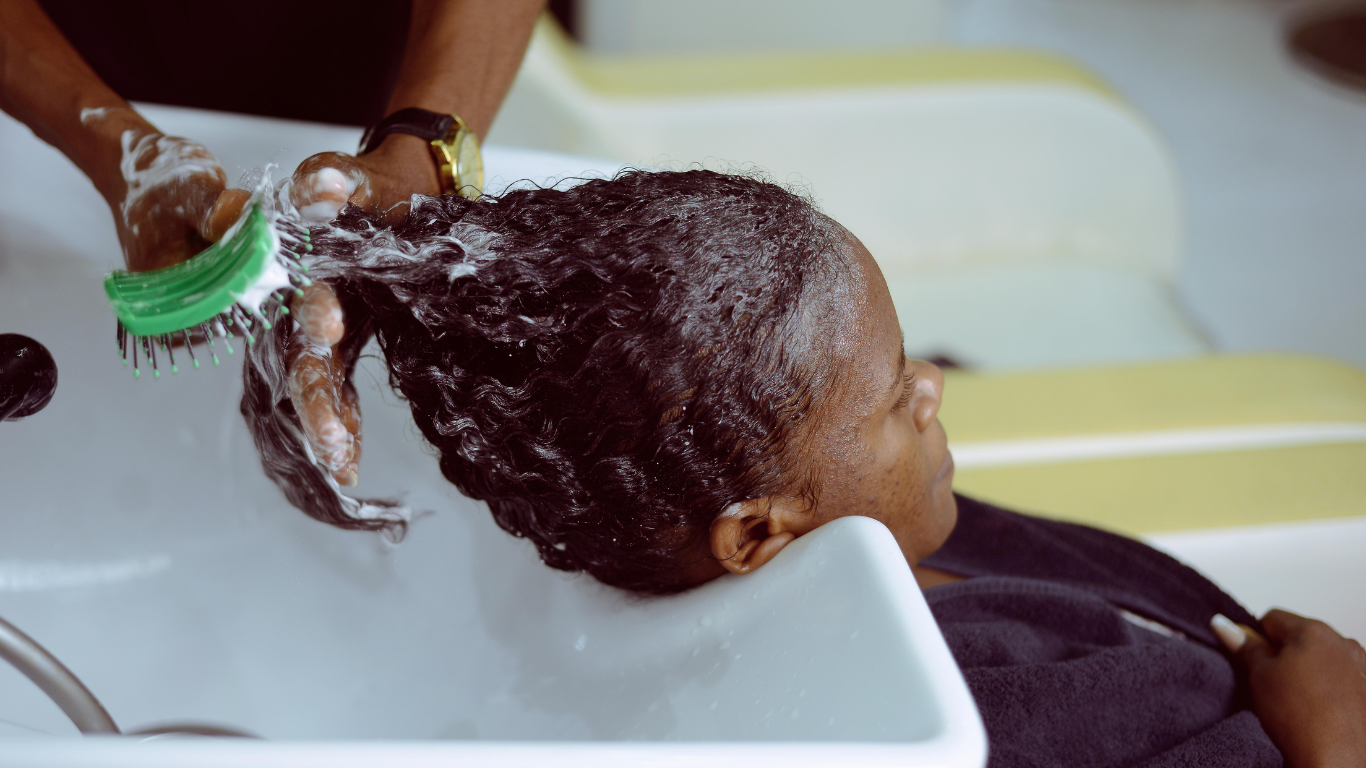Weekly Haircare Routine for Low Porosity Hair
If you struggle to get moisture into your hair no matter how many products you use, then ther’s a high chance that you have low porosity hair - especially if you notice that products tend to just sit on top of your hair strands. And what does that mean for your haircare? It means that you have to customize your haircare routine around your low hair porosity, by choosing the right products and techniques that will better cater to it. This has probably been the biggest hair lesson for me, because I had never realized how much of my frustrations came from not having a suitable hair care routine for my 4c low porosity hair.
So let’s break down how to create a hair care routine that actually works for low porosity hair, especially if, like myself, you have kinky and coily hair.
1. Pre-Wash (optional but beneficial) - 1x/week
Goal: Loosen buildup, prep for moisture
Use: Aloe vera juice spray, light oil blend (like grapeseed or argan)
Method: Apply 15–30 minutes before shampooing. Wrap with a warm towel or use a heat cap.
2. Cleanse - 1x/week
Use a gentle sulfate-free shampoo
Ex: Camille Rose Sweet Ginger, Kinky Curly Come Clean (for clarifying)
Clarify every 2–4 weeks to remove buildup.
Tip: Use warm water to help lift the cuticle slightly for better cleansing and moisture absorption.
3. Deep Condition - Weekly
Use: A moisturizing deep conditioner with heat
Method: Apply and use a heat cap or steamer for 20–30 minutes.
Avoid: Protein-heavy formulas unless your hair is damaged.
4. Leave-In Conditioner
Use: Lightweight, water-based leave-in
Apply: To damp (not dripping wet) hair for better absorption.
When to apply:
Right after washing (1x/week or every wash day)
Why: Leave-ins help with detangling, initial moisture retention, and curl definition. Since low porosity hair holds onto moisture longer, there's no need to reapply until the next wash day unless your hair is unusually dry.
5. Moisturize + Seal (LOC or LCO Method)
Try both methods and see what works best:
LCO: Leave-in → Cream → Oil
LOC: Leave-in → Oil → Cream
Sealants: Use light oils like argan, sweet almond, or jojoba. Avoid heavy butters unless it's very cold or dry out.Moisturizer (Cream or Liquid)
When to apply:
Every 2–3 days, or when your hair feels dry to the touch
How to tell if you need it:
Your hair feels stiff, rough, or loses definition
Your strands don’t bounce back when stretched
How to Refresh Between Wash Days
Use a light mist: Mix water + a little leave-in or aloe vera juice in a spray bottle.
Reapply moisturizer: Lightly to dry areas (like ends), then seal with a light oil.
Avoid saturating: Don't overload low porosity hair with too many layers mid-week.
6. Style
Use curl-friendly gels or creams that are lightweight and non-filmy.
Ex: Uncle Funky’s Daughter Curly Magic, The Doux Mousse Def Texture Foam
Tip: Apply products in sections and rake or smooth through for even distribution.
7. Night Care
Wrap or cover hair with a satin/silk scarf or bonnet
Pineapple or twist hair to preserve styles and reduce friction.
🗓️ Monthly Add-Ons
Clarifying Shampoo (1–2x/month): to remove product buildup
Ex: Ion Clarifying Shampoo, Kinky Curly Come Clean
Scalp Treatment: Use a gentle scalp scrub or tea tree oil mix for scalp health.
Apple Cider Vinegar Rinse: Mix 1 part ACV to 3 parts water to rebalance pH and add shine.
🛑 Key Things to Avoid
Heavy products like raw shea butter or thick creams : these will won’t penetrate through the cuticles and will only cause product build up.
Cold water rinses when applying deep conditioners or leave-ins: hot water helps to open the cuticles which is what allows the hair to absorb moisture.
Layering too many products without clarifying: even though clarification may sometimes feel stripping to the hair it is necessary to remove the build up. Clarify your hair about once a month to help resetting it.
Frequent protein treatments.
Final Thoughts
The key thing about hair care is knowing your hair. It won’t matter if brand A, B or C launch a product that people rave about if it doesn’t work for your hair. Knowing your porosity is a great first step and if you have low porosity hair and adopt the tips given above, then more likely than not you will see your hair thrive. Low porosity hair isn’t better or worse that the other hair porosities, it just requires a different care.








